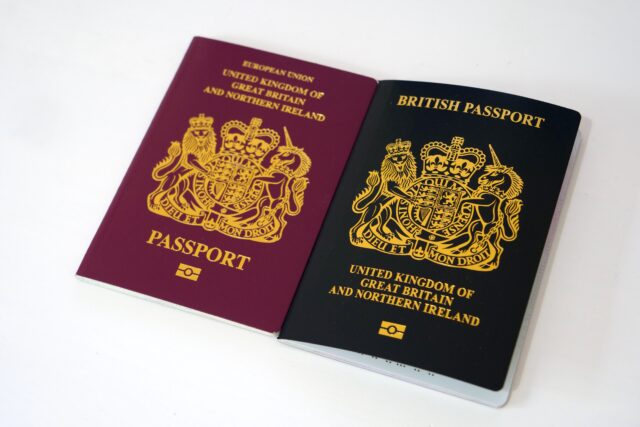France Second-Home Owners: Here’s How to Apply for a Temporary Long-Stay Visa
Essential Reading


For second-home owners in France or those looking to buy French property after Brexit, one of the biggest concerns post-Brexit is the changes regarding travelling to France. British travellers can now only travel to France for up to 90 days within any 180 day period*, and those hoping to stay longer than 90 days will need to apply for a long-stay visa.
What Kind of Visa Do You Need?
Second-home owners resident in the UK or other non-EU countries will need a long-stay visa to stay in France for longer than 90 days. For those who intend to visit France only and not become resident, the easiest option is to apply for a visa de long séjour temporaire visiteur or VLS-T Visiteur. This visa is the temporary version of a long-stay visa – the difference being that it is not possible to renew the visa or apply for a residency card (carte de séjour).
The temporary long-stay visa is typically issued for stays of between four to six months (remember, if you plan to spend longer than six months in France, it is likely that you will be classed as living in France for tax purposes). If you plan to split your time between France and your country of residence, you’ll need to apply for a new visa each year.
This visa does not allow you to work or study while you are in France.
Long-Stay Visa Requirements in France
Long-stay visa applications are considered on an individual basis, and you must prove that you have sufficient funds and healthcare coverage for the duration of your stay. But what does this mean in practice?
The French Embassy in the UK states the following requirements:
Sufficient funds
Sufficient funds required for a single person are around €1,300-400 monthly net, and you’ll need to show that you have sufficient funds for the entire 6-month validity period of your visa (even if you only intend to stay for a few months), either through proof of regular income or by depositing the entire amount in a bank account.
These funds can be from personal income, savings, annuities or pensions, or other valid income sources. You can also be financially sponsored by a spouse, partner, or family member.
It’s also worth noting that these are just rough figures based on France’s minimum wage. Each application is assessed on an individual basis, and the required funds would likely be lower for a couple visiting together, if you own the property in which you will be staying, or if your accommodation has already been paid for in advance.
Healthcare
You must have health insurance for the full duration of the visa’s validity period. The good news for British citizens is that the EHIC card (which remain valid for British citizens until the renewal date IF you already had one prior to Brexit) or the Global Health Insurance Card (the UK’s new version of the European Health Insurance Card) is accepted for this kind of visa. For Americans or other non-EU citizens, private travel health insurance is required, with a minimum cover of €30,000 to cover urgent medical care and repatriation costs.
What Documents Do You Need to Provide for a Temporary Long-Stay Visa?
The required documents you will need for your Temporary Long-Stay Visa application are as follows:
- Your passport (this must be less than 10 years old, with a validity of at least 3 months longer than the visa expiry date you are applying for).
- 2 x ID photographs (following passport-style regulations)
- Proof of residence in the country you are applying if you are not a citizen
- Proof of your socio-economic situation (retired, employed, self-employed, etc.)
- An attestation stating the purpose for your stay (for example, that you are a second-home owner wishing to visit or carry out maintenance on your holiday home) and that you will not exercise any professional activity in France
- Proof of your travel health insurance
- Proof of your French residence, rental agreement, or intended place of residence
- Proof of sufficient funds (for example, 3 months of bank statements with your full name and address, those of your spouse/partner along with your marriage certificate, or savings account with the full amount).
How to Apply for Your Long-Stay Visa in France
You can apply for your long-stay visa in France via the France Visas Online Portal.
This process can be done online, after which you will need to make an appointment at your local embassy or visa centre—UK residents can visit the French Embassy in the UK to find your nearest embassy. You will need to print out the receipt of your application and bring it, along with all required documents, to the meeting. When your visa is ready, you will go back to the embassy to pick it up or you can arrange to have it returned to you by courier (fees apply). During the final meeting, you will also have a biometric iris scan and fingerprints taken (these are retained for five years by the French Consulate).
You can start the application process from three months before your intended arrival date in France.
How Much is a French Long-Stay Visa?
Typically, a long-stay visa costs €99, which is payable at your visa application interview. There is also a non-refundable visa application processing fee payable at the time of your online application. This fee varies depending on your country of application, but in the UK it is £26 payable to TLSContact, while in the US it’s $38.20 to VLS Global. Additional credit card transaction fees may also apply.
There is also a non-refundable visa application processing fee payable at the time of your online application. This fee varies depending on your country of application, but for example, in the UK it is around £26 payable to TLSContact, while in the US it’s $38.20 through VLS Global. Additional credit card transaction fees may also apply.
Additional fees apply if you opt to have your passport and visa returned to you by courier (in the UK, expect this to cost around £16).
Tips for Applying for Your Long-Stay Visa
Some tried and tested tips from our readers:
- When applying online you MUST remember to print out (or save to your computer) the completed Application and Registration Receipt (available at the end of the application process). If you try to print these out later, they will be ‘draft’ copies and not accepted when you go in for your in-person meeting.
- Print-outs of bank statements are accepted, but you must find at least one with your address at the top and this can be tricky if you only have online statements. An old statement showing the address, accompanied by recent statements showing your balance may be accepted.
Have you applied for a long-stay visa in France? Get in touch and let us know your experience.
Moving to France?
From applying for your visa and opening a French bank account, to integrating in your new community – FrenchEntrée is here to help! Let our Essential Reading and Visa & Residency articles guide you through the whole process, then visit our Owning Property, French Tax, Healthcare, and Life in France zones for everything else you need to know.
Disclaimer: Our Essential Reading articles are designed to give an overview of the visa requirements and procedures for moving to France. We always check our information against the official government information made available to the public, however, please remember that all visa applications are considered on an individual basis and the exact requirements, fees, or application procedure may vary. Unless you are an EU citizen, obtaining a French visa is not a right, and we cannot guarantee that your visa will be approved.
Share to: Facebook Twitter LinkedIn Email
By FrenchEntrée
Leave a reply
Your email address will not be published. Required fields are marked *




REPLY
REPLY